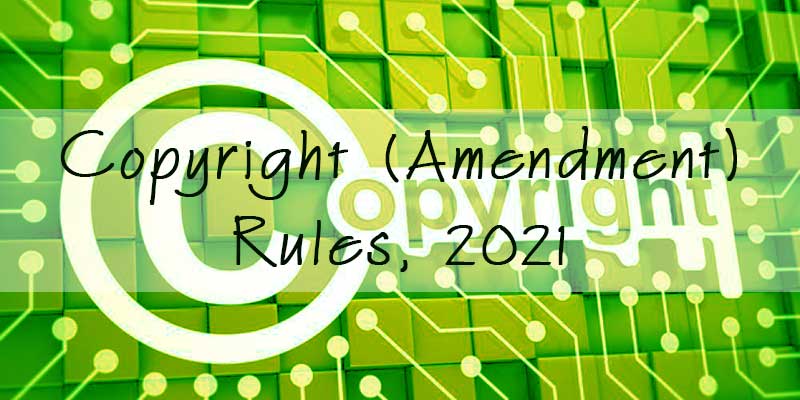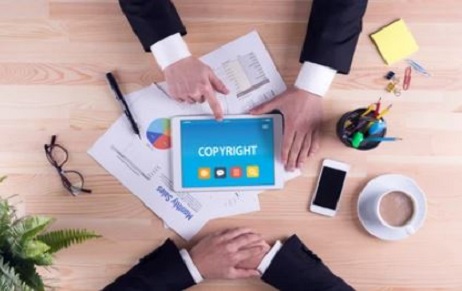Introduction Artificial intelligence (AI) has emerged as one of the biggest game-changers in recent years…
New Phase of the Copyright Regime: Critical Note on the Copyright (Amendment) Rules, 2021
In India, the copyright regime is governed by the Copyright Act, 1957 and is regulated by the Copyright Rules, 2013. The Ministry of Human Resources and Development on 14 March 2013 notified the Copyright Rules, 2013. Two years ago, in 2019 a draft for amendments was released for public comments. On 30 March 2021, the government of India has notified the Copyright (Amendment) Rules, 2021 vide gazette notification. Prior to this amendment, the Copyright Rules, 2013 was last amended in 2016.
The primary objective of the amendment is to ensure accountability and transparency. It deals with the use of electronic and traceable payment methods, distribution of royalties, undistributed royalty, annual transparency report by copyright societies, among other.
Highlights of the Amendment-
Appellate Board:
Copyright (Amendment) Rules, 2021 substituted “Copyright Board” with the “Appellate Board”. Such change was done to bring consistency between the rules and the parent act, in which the Copyright Board has been substituted to Appellate Board via the amendment of 2017. Such an amendment acted as a positive change to syn the rules with the Copyright Act, 1957. However, with the recent development of abolishment of the Appellate Board, the term has been substituted with ‘Commercial courts.’
Limitation on the Central Government:
As per the amendment, the Registrar of Copyrights has to accept or reject the application for registration of a copyright society within a period of “one hundred and eighty days” from the date of receipt of application. The time limit has been extended from 60 days to 180 days. This provision provides added time for careful scrutinization and examination of the application and also imposes self-accountability on the Central Government.
Management:
The Chairman and other members of the Governing Council of a copyright society are eligible for re-election after completion of their 2-year terms.
Mode of communication:
The rules encourage electronic communication. It provides that every written intimation from the Board, the Copyright Office, or the Registrar of Copyrights shall be communicated through electronic means or by registered post. It is pertinent to note that registered post as a means of communication is still acceptable. Furth more, rule 7(1) specifies that a copy of the application under rule 6 along with the documents relied upon shall be served on the owner of the copyright through electronic means or by registered post. This amendment to the rules is in light of technological advancement in the digital era.
Copyright Journal:
Like the Trademark Journal, the amended rules have introduced a Copyrights Journal. The amendment Rules have eliminated the requirement of publication in the Official Gazette and has provided for publication of a Copyrights Journal. The journal would be made available at the official website of the Copyright Office. In Rule 11(6), Rule 18(5), Rule 23, Rule 27, Rule 31, Rule 34(1) (3) (6), and Rule 39 the word “Official Gazette” has been substituted with “journal”.
Source Code:
The rules provide that part VI of the Register of Copyrights shall be limited to computer programs and reference to tables and compilations shall be omitted. For the registration of the computer programs, at least the first 10 pages and last 10 pages of the source code, or the entire source code if less than 20 pages long, without blocking or redacting any portions must be made available by the application. By this, the compliance requirements for registration of software have been reduced as earlier there was a requirement to submit the entire “source and object code”. Such an amendment ensures that the confidential information in the source code of the computer program is not compromised in any manner.
Copyright Societies:
The new provision lays emphasis on the use of electronic and traceable payment methods for the collection and distribution of royalties in order to ensure accountability and transparency. The amendments are harmonized with Finance Act, 2017. Additionally, in the case of undistributed royalty at the end of three financial years in which the collection of the royalty occurred, the royalty is transferred to the welfare fund of the copyright society. These societies are required to take measures to locate authors/owners and publish information with regards to the title of the work, the name of the authors/owners, and other relevant information for identifying the right holder on its website. They are also required to publish their tariff schemes.
A newly inserted rule- Rule 65A provides that the Copyright Societies are required to draw up and make public an Annual Transparency Report for each Financial year within 6 months following the end of the financial year. All this helps in reinforcing transparency in the working of copyright societies.
Annual Transparency Report:
As mentioned, the Copyright Societies are required to the public an Annual Transparency Report. The report contains, inter alia, activities of the financial year, details on license refusals, financial information on royalties collected and paid to authors, and use of amounts deducted from royalties for welfare schemes and administrative purposes and welfare schemes, and information on amounts received from and paid to the foreign societies or organization. This report ensures accountability and transparency in the functioning of the Copyright Societies.
The Copyright (Amendment) Rules, 2021 has also deleted certain aspects such as the procedure for tendering notice and manner of investigation for the importation of infringing copies. Even the Second Schedule stands deleted. The Amendment Rules lie in tandem with the technical advancement. It will have positive implications in the digital era and will ensure transparency and accountability. However, only the passage of time will provide us with a clear stance on transparency and accountability brought in the Copyright regime by the Copyright (Amendment) Rules, 2021.
Author: Vibhuti Kaushik, a 3rd Year student of B.B.A. LLB. Symbiosis Law School, Pune, intern at IIPRD. In case of any queries please contact/write back to us at [email protected].




